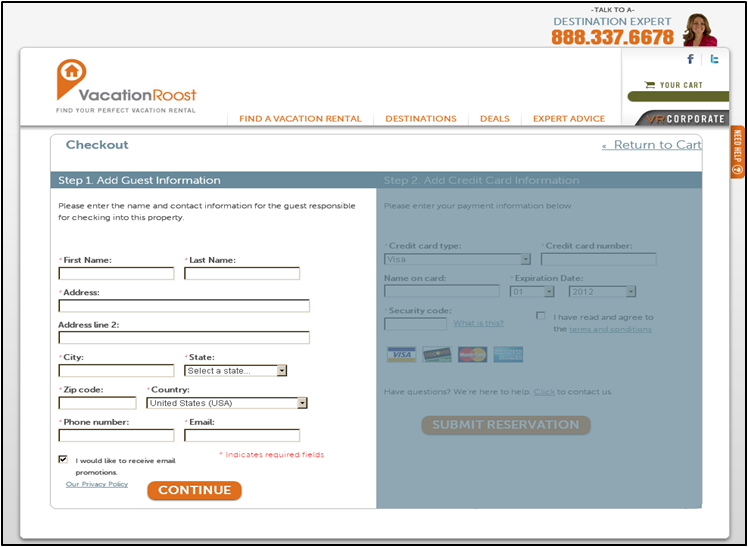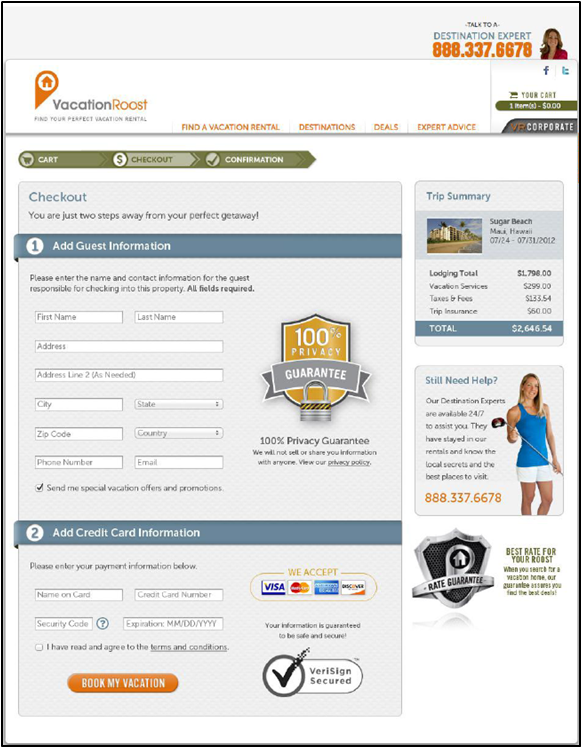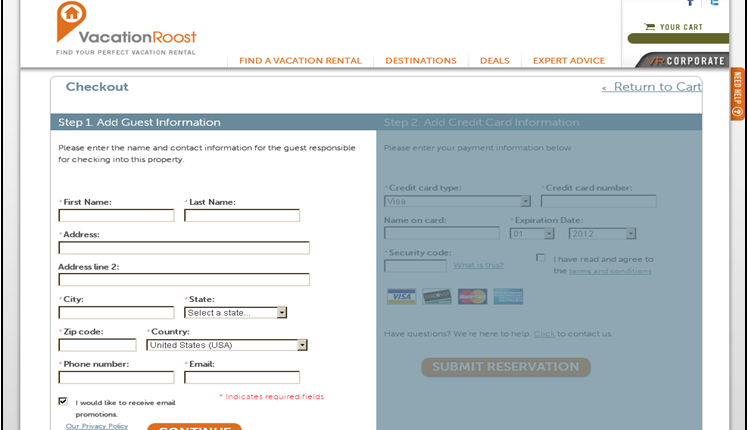Identifying and optimizing a few elements early in your sales funnel might give you a few quick wins, but what about the bigger picture of thinking about your entire sales funnel and long-term solutions for fixing the revenue leaks deeper within your checkout process?
In today’s MarketingExperiments blog post, we’ll show you a checkout page experiment and two questions that every marketer should contemplate beyond their testing.
But first, let’s take a look at some of the research notes on the experiment.
Background: A consumer company specializing in vacation rentals
Goal: To increase the number of vacation confirmations
Primary Research Question: Which page will yield the highest conversion rate from billing information to confirmation?
Test Design: A/B multi-factor split test
Control

The control featured a two-step horizontal design that shaded and separated Step 2 (second half of the form) until a “Continue” button was clicked, allowing users to move forward in the checkout process.
Once users completed the second step, they would click a second “Submit Reservation” button.
Treatment

The treatment changes the form design from a two-step horizontal flow to a vertical design with minimized form fields. The treatment also reduces the calls-to-action to a single “Book My Vacation” button.
Results

The treatment outperformed the control by a relative difference of 36% at a 98% level of confidence. So what can we learn from this experiment?
What you need to understand
When I asked Kyle Foster, Research Manager, MECLABS, about what we can learn from this experiment, he offered two takeaway questions that marketers should ask themselves:
- Do I understand my sales funnel completely? – Kyle explained that every lift you discover in your sales funnel is a direct increase to your ROI, and thinking about your sales funnel holistically will give you the greatest possible leverage to discover those lifts.
Kyle added that thinking about your sales funnel on a larger scale can also help identify potential revenue holes deeper within your funnel. “You want to plug the holes in the bottom of the bucket by fixing the end of a broken funnel prior to bringing in more traffic.”
- Am I thinking beyond the data? – Similar to his suggestion on thinking about the sales funnel, Kyle explained that marketers should also think beyond their data and short-term goals to gain a greater insight on developing a testing cycle that will produce better results.
“Sometimes you just have to use a little common sense in treating areas that will have a greater impact,” Kyle said.
He further added, “Aside from testing individual page elements, marketers should really take into consideration the overall areas of opportunity that exist by thinking about where the problems are now and where new problems might exist in the future.”
Related Resources:
Landing Page Optimization: 3 test ideas from a WordPress landing page
Optimization 201: Fix the broken leg before you fix the broken toe
Landing Page Optimization: 4 test ideas for a free-trial, lead gen form page
Form Optimization: 3 case studies to help convince your boss (and Sales) to reduce form fields



